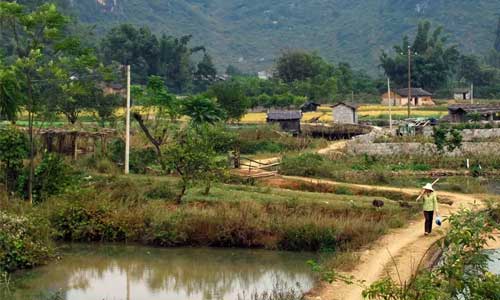Chinese officials are making concerted efforts to build a moderately prosperous society through alleviating poverty and promoting the country’s economy. All the Chinese enjoy the fruit of their country’s development and live an affluent life. Protecting cultural sites and attracting foreign and domestic tourists are one of the main factors behind the economic development of China.
Having a trip to Jincheng, in the southeast of Shanxi province, along with media delegation from South and Southeast Asia, I have been highly impressed by the historical sites and economic development of this city.
Jincheng, which is home to 2.33 million people, is known as an international garden city, a national landscape garden city and a city of intangible cultural heritage.
China has relocated a large number of households in some villages in Jincheng city and created jobs for them. For example, we visited Huangcheng village, which is home to 351 households and 917 people. The house-owner was relocated to a new home in the aftermath of the government’s revitalization project. Previously, he, along with other villagers, lived in Royal Minister’s Castle, which was changed into tourist scenic spot by the local government. Following the relocation project, the village could attract more tourists and a large number of the residents serve as tourist guides in the area. Since this city is very rich in coal, some residents also work in coal mine industries. Similarly, pharmaceutical factories are also a source of income for the residents of the village. In short, every resident is employed, every household is sheltered and holds shares and the per capita income is 50,000 yuan in this village.
There are 22 enterprises in Huangcheng village, with the total assets of 8 billion yuan and close to 6,000 employees. There are also three major industrial sectors such as coal, tourism and hi-tech industries, of which tourism, pharmaceutical and wind industries are the key transformation industries. The village is able to achieve the annual sales revenue of 2 billion yuan and pay taxes of 400 million yuan.
To view this province from the historical perspective, Shanxi is reputed as “the birthplace of the 5,000-year-odl civilization” for nurturing countless number of ancient cultural human sites. With many cultural relics, Shanxi also has 452 state-level key cultural relics protection units, ranking first across China. In Shanxi, the Ancient City of Pingyao, Yungang Grottoes and Mount Wutai are popular both in China and outside. Likewise, 120 types of minerals are found in Shanxi. To cut the long story short, Shanxi firmly implements the strategy of innovation-driven transformation and upgrading, deepens the reform and opening-up, step up the development of strategic emerging industries, promotes green and low-carbon utilization of coal, intensifies environmental protection and ecological construction, focuses on improving people’s livelihood, and maintain social harmony and stability.
What is so important is that China intends not to leave a single village behind while implementing the poverty alleviation project, which will be accomplished in 2020.
To view the development of only one province in China, it can be a good lesson for its close neighbor Afghanistan to struggle for economic development and seek to build a violence-free and corruption-free society. To view Afghanistan, it has all the aforementioned potential resources which have remained untapped despite the abject poverty. Afghanistan also has rich mineral resources and human capitals to transform the country into an economically strong country.
Afghanistan’s conflict is not the biggest challenge rather corruption and the presence of corrupt politicians in the government’s body is believed to be the worst-case scenario. Conflict will be mitigated to a great extent if officials eliminate poverty from the government’s machinery and put all their energy for the country’s development.
Afghanistan has huge potential energy. It is estimated to have the potential for producing 223,000 MW of solar energy, 23,000 MW hydropower energy and 68,000 MW of wind energy. Moreover, Mes Aynak is one of the world’s largest untapped deposits and a 5,000-year-old archeological site in Afghan province of Logar containing an estimated 12.5 million tons of copper. But the government is yet to tap the natural and mineral resources of the country to contribute the domestic economy and lift people out of poverty.
Afghan government should also pay especial attention to rural development and create jobs for all urban and rural residents similar to that of China. Kabul government is also advised to have short-term, mid-term and long-term plans for poverty alleviation and economic development and explain their annual achievements to the public, it is what China is doing. With the transparency, the masses will trust the government and the responsibilities and efforts of each individual officials will be clear to the citizens. So, China can be a good example for all developing and under-developed countries for strengthening their economies.
Home » Opinion » China’s Rural Development – A Model for Afghanistan
China’s Rural Development – A Model for Afghanistan
| Hujjatullah Zia

